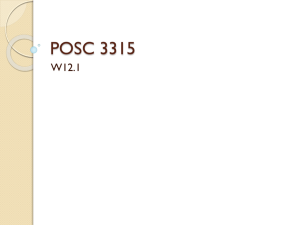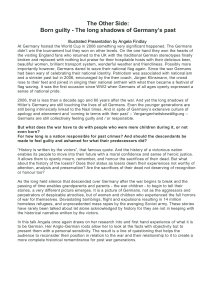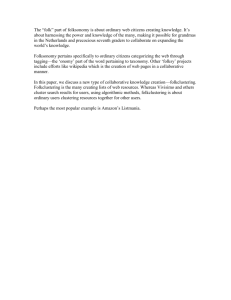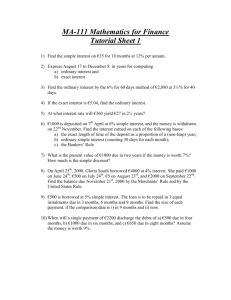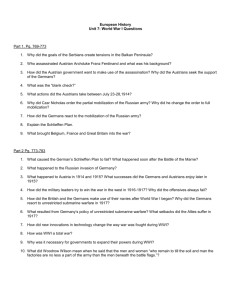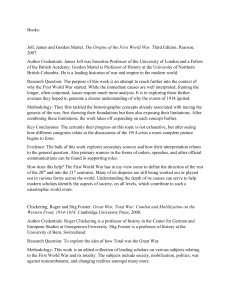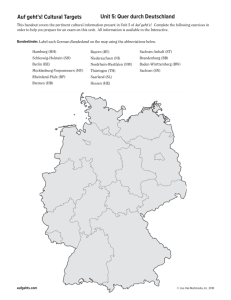Political Science Scope and Methods
advertisement
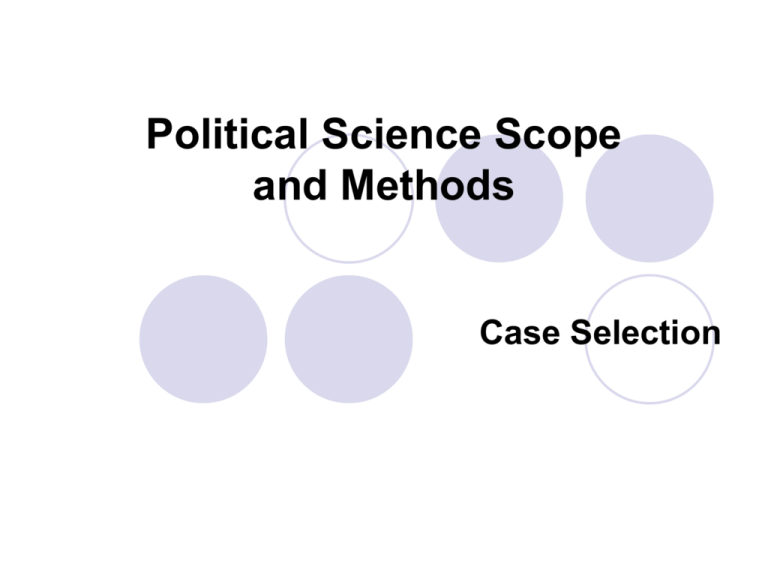
Political Science Scope and Methods Case Selection Onto the Nuts and Bolts… This week: Case selection Next week: Measurement Overview How to choose cases Large N vs. Small N analysis Sampling cases What Is a “Case”? Unit of analysis: definitions “The objects that a hypothesis describes or explains and are the focus of study.” “A unit is the unit of analysis for an effect if and only if that effect is assessed against the variation among units.” Case: what is the unit? “Observations used to draw inferences at whatever level of analysis is of interest.” What Is a “Case”? (continued) Units of observation vs. areas of study Van Evera’s use of the term KKV’s use of the term Case Selection: What to do? Basic point: Don’t “cook” the data Goal is “conditional independence” – no systematic factors guide case selection Case Selection: Rules of Thumb Don’t select on DV! Restricted range on DV misestimates effect of IV; Faulty inferences result Example: • Achen and Snidal on rational deterrence theory • Selection of “acute crises” give an incomplete picture No variation on DV – can’t learn anything Example: • Skocpol on revolutions • Does have some information on non-revolutions; events at “moments of revolutionary crisis.” Rules of Thumb (cont). Random Selection? Good for large-N analysis Problematic for small N; need some deterministic selection criteria Stratified sampling Group your sample into sub-populations of interest Then randomly sample from those groups Select on Another variable Unrelated variable: maybe loose important cases Select on IV Large-N vs. Small-N Analysis KKV Revisited: what is possible with small-N work? Put cases in context; be aware of limitations Example: Kohli on poverty policy in India Choose important cases, but explicate selection criteria Van Evera – case selection guides, but… Big point: can’t just pick cases and pretend that the background standards of inference are met Internal vs. External validity. Case Study of Case Selection Golghagen Hitler’s Willing Executioners Theory: The particular brand of anti-Semitism in Germany – "exterminationist" anti-Semitism – caused the Holocaust Wants to look at actions of “ordinary Germans”; see if they participated in acts driven by this ideology Examines: Police squads Work Camps Case Study Continued Makes inference from data: “the conclusions drawn about the overall character of the members' actions can, indeed must be, generalized to the German people in general. What these ordinary Germans did also could have been expected of other ordinary Germans” (p. 402). Questions of external validity Aside: Archival Research Be careful about “selecting” from history “History” differentially selects the cases we observe Example: Gamson on interest group success • Looks at historical record for group activity • Better record of successful groups What is the historical record? Lustick: No unbiased record of history Historical accounts intertwined with “implicit theories”
